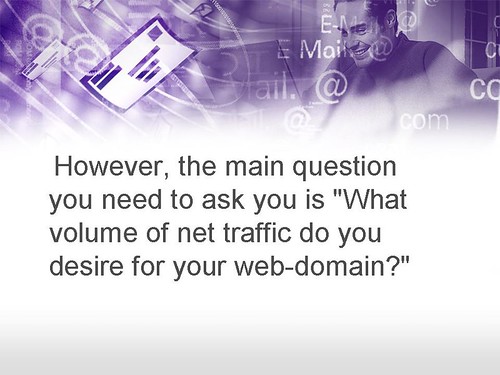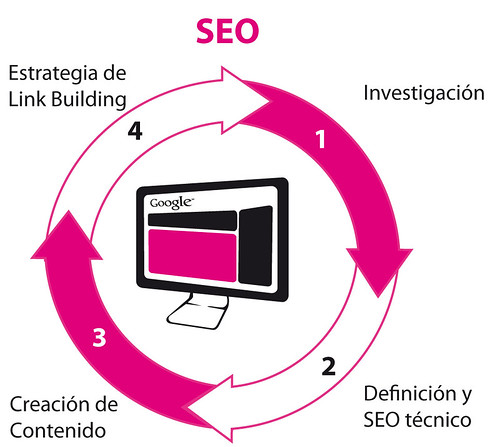Another day, another honking big funding for another online start-up (and yet another broken embargo too!).
It’s like Groundhog Day in Silicon Valley as usual.
Today, Cambridge, Mass.-based HubSpot wins tech’s version of the lottery, grabbing $32 million from Sequoia Capital, Google Ventures and also Salesforce.com.
It is unclear what the valuation for HubSpot is now, although it is likely high given it has raised $65 million now.
HubSpot makes marketing software for businesses, who use it to find prospects and generate leads, along with tools to analyze the process. It claims it has “4,000 customers, over 50 percent market share, five million leads managed, and 70 million page views tracked monthly.”
The Series D financing included HubSpot’s existing venture investors–General Catalyst Partners, Matrix Partners, and Scale Venture Partners–and part of it will be used to cash out existing shareholders. In previous rounds, the start-up has raised $33 million.
Here is the official press release:
Sequoia, Google Ventures, and Salesforce.com Invest $32 Million in HubSpot
Marketing Software Company Attracts New Strategic InvestorsCAMBRIDGE, MA–(Marketwire – March 8, 2011)–Today, for the first time ever, Sequoia Capital, Google Ventures and Salesforce.com all invested together in one company, providing HubSpot with a Series D round of financing through a $32 million investment. HubSpot provides all-in-one marketing software used by over 4,000 businesses to get found by more prospects, convert them into leads and sales, and analyze the entire marketing process.
“The fundamental way that people shop, learn, and buy has changed radically in the last few years. HubSpot helps transform the way businesses market from outbound marketing (cold calls, email blasts, and direct mail) to inbound marketing (Google, blogs, social media, mobile, etc.),” said Brian Halligan, co-founder and CEO of HubSpot.
Sequoia Capital has a long history of partnering with founders to help them build long-term, multi-billion dollar companies, including Google, LinkedIn, AdMob, YouTube, Yahoo!, Apple, and Oracle. “We back companies that are transforming their industries,” said Jim Goetz, General Partner at Sequoia Capital. “HubSpot is the emerging category leader in the SaaS marketing sector. Their customer base exceeds that of all the other relevant marketing software companies combined, including Eloqua, Marketo, Genius, and Manticore.”
“Today, every company needs to succeed in search, social, sales, and marketing–I can’t think of a more powerful trifecta than Google, Salesforce.com, and HubSpot. With 4,000 customers, HubSpot is already a clear marketing leader–now, with this new infusion of capital and recognition by Google’s venture arm and Salesforce.com, HubSpot has a great opportunity to separate itself from the pack and become the leading marketing platform in the small and medium business space,” said Brent Leary, co-founder of CRM Essentials.
Google Ventures Partner, Rich Miner (formerly co-founder of Android) said, “We agree with HubSpot’s belief that search engines, social media, and mobile devices have fundamentally changed how businesses should market themselves. We’re thrilled to support their efforts to help thousands of small and medium businesses reach potential customers.”
Dharmesh Shah, co-founder and CTO of HubSpot commented, “We founded the company based on a simple premise: Businesses want an easy-to-use, complete and integrated marketing platform that helps them get more leads and customers. We plan to use this new capital to further invest in this ambitious vision and further our existing lead in the marketing software category.”
Another day, another honking big funding for another online start-up (and yet another broken embargo too!).
It’s like Groundhog Day in Silicon Valley as usual.
Today, Cambridge, Mass.-based HubSpot wins tech’s version of the lottery, grabbing $32 million from Sequoia Capital, Google Ventures and also Salesforce.com.
It is unclear what the valuation for HubSpot is now, although it is likely high given it has raised $65 million now.
HubSpot makes marketing software for businesses, who use it to find prospects and generate leads, along with tools to analyze the process. It claims it has “4,000 customers, over 50 percent market share, five million leads managed, and 70 million page views tracked monthly.”
The Series D financing included HubSpot’s existing venture investors–General Catalyst Partners, Matrix Partners, and Scale Venture Partners–and part of it will be used to cash out existing shareholders. In previous rounds, the start-up has raised $33 million.
Here is the official press release:
Sequoia, Google Ventures, and Salesforce.com Invest $32 Million in HubSpot
Marketing Software Company Attracts New Strategic InvestorsCAMBRIDGE, MA–(Marketwire – March 8, 2011)–Today, for the first time ever, Sequoia Capital, Google Ventures and Salesforce.com all invested together in one company, providing HubSpot with a Series D round of financing through a $32 million investment. HubSpot provides all-in-one marketing software used by over 4,000 businesses to get found by more prospects, convert them into leads and sales, and analyze the entire marketing process.
“The fundamental way that people shop, learn, and buy has changed radically in the last few years. HubSpot helps transform the way businesses market from outbound marketing (cold calls, email blasts, and direct mail) to inbound marketing (Google, blogs, social media, mobile, etc.),” said Brian Halligan, co-founder and CEO of HubSpot.
Sequoia Capital has a long history of partnering with founders to help them build long-term, multi-billion dollar companies, including Google, LinkedIn, AdMob, YouTube, Yahoo!, Apple, and Oracle. “We back companies that are transforming their industries,” said Jim Goetz, General Partner at Sequoia Capital. “HubSpot is the emerging category leader in the SaaS marketing sector. Their customer base exceeds that of all the other relevant marketing software companies combined, including Eloqua, Marketo, Genius, and Manticore.”
“Today, every company needs to succeed in search, social, sales, and marketing–I can’t think of a more powerful trifecta than Google, Salesforce.com, and HubSpot. With 4,000 customers, HubSpot is already a clear marketing leader–now, with this new infusion of capital and recognition by Google’s venture arm and Salesforce.com, HubSpot has a great opportunity to separate itself from the pack and become the leading marketing platform in the small and medium business space,” said Brent Leary, co-founder of CRM Essentials.
Google Ventures Partner, Rich Miner (formerly co-founder of Android) said, “We agree with HubSpot’s belief that search engines, social media, and mobile devices have fundamentally changed how businesses should market themselves. We’re thrilled to support their efforts to help thousands of small and medium businesses reach potential customers.”
Dharmesh Shah, co-founder and CTO of HubSpot commented, “We founded the company based on a simple premise: Businesses want an easy-to-use, complete and integrated marketing platform that helps them get more leads and customers. We plan to use this new capital to further invest in this ambitious vision and further our existing lead in the marketing software category.”
Surface Encounters
Dallas Cowboys' Dez Bryant faces 2nd lawsuit, for $615K
![]() Cowboys receiver Dez Bryant faces a second lawsuit claiming he didn't pay for jewelry and game tickets and didn't repay loans.
Cowboys receiver Dez Bryant faces a second lawsuit claiming he didn't pay for jewelry and game tickets and didn't repay loans.
Surface Encounters
PS3 Jailbreak: Hotz strikes back PlayStation 3 <b>News</b> - Page 1 <b>...</b>
Read our PlayStation 3 news of PS3 Jailbreak: Hotz strikes back.
Surface Encounters
PS3 Jailbreak: Hotz strikes back PlayStation 3 <b>News</b> - Page 1 <b>...</b>
Read our PlayStation 3 news of PS3 Jailbreak: Hotz strikes back.
Surface Encounters
With the company’s future already clouded by Steve Jobs’ latest medical leave, the possibility of the iPad’s chief designer, Jonathan Ive, cashing out ups the uncertainty, Dan Lyons writes.
Is Apple losing its design guru?
When Apple CEO Steve Jobs announced in January that he would take a third medical leave, the biggest concern was the cloud of uncertainty that hovered over the company. Now that uncertainty has become an issue again, as rumors have started swirling that Apple might lose its chief designer, Jonathan Ive.
Apple's head designer Jonathan Ive poses for a portrait on January 27, 2010 in Cupertino, California. (Photo by Paul Harris / Newscom)
Reports in Ive’s native England suggest that the man who oversaw the design of the iPhone and iPad wants to spend more time in the U.K., putting him at odds with Apple’s board enough that he would consider leaving the company. Although Ive and Apple won’t comment, the scenario is plausible for two reasons: First, Ive is about to cash in options valued at $30 million that he was granted in 2008; and second, Ive has an especially close relationship with Jobs.
Whether Ive stays or goes, the brouhaha shows the challenges that Apple is increasingly likely to face given the questions about Jobs’ role in the coming months. One scenario being bandied about by Apple-watchers suggests Ive is making a power play to succeed Jobs; it seems just as likely, however, that he simply may not want to work at Apple if Jobs isn’t there.
Still others think the entire notion that Ive might leave is completely unfounded. But either way, the whole incident shows how the Jobs health situation is bringing more drama to a company that, until now, has been a model of tight-lipped discipline.
Apple’s products are famous for their sleek designs, and conventional wisdom holds that losing Ive would be a terrible blow to Apple—“Apple’s worst nightmare,” Britain’s Guardian called it. But the truth is, losing Ive may not be as big a deal as some Apple watchers think.
For one thing, Apple has loads of bench strength in every department, and because of its success it can attract just about anyone it wants.
“How much of this is Steve, how much is Jon, how much someone else? Steve always had an eye for design. The designer is only as good as the client,” says Jean-Louis Gassée.
For another, the real genius behind Apple’s designs might not be Ive—but rather Jobs.
That’s the educated guess of Jean-Louis Gassée, a former top executive at Apple and a longtime close watcher of the company who still has many connections there.
Gassée points out that Ive was already working at Apple when Jobs returned to the company in 1996. Ive joined the company in 1992, when Jobs was gone from the company, having been ousted by the board in 1985.
And before Jobs returned to Apple, Ive wasn’t exactly setting the world on fire. The first products that Ive designed under Jobs were the “Bondi Blue” iMac and the somewhat ugly iBook. Ive’s next products, the "desk lamp" Mac and the early metal laptops, were better looking, Gassée says.
I read an interesting article this morning that suggested Apple would change its mind and put Adobe’s Flash technology on its iOS devices within a year. I don’t think that’s going to happen.
In an open letter to users, Apple CEO Steve Jobs gave several reasons why he didn’t want Flash on the iPad, iPhone or iPod touch. They are: Flash isn’t open; the full web; reliability, security and performance; battery life; and touch.
Adobe began shipping Flash Player 10.1 for Mobile last June, but even Laptop magazine admitted that “Steve Jobs was right,” and that “Adobe’s offering seems like it’s too little, too late.” Granted, that report was from six months ago, but it still doesn’t bode well for the technology.
There is no doubt that Adobe is making advances with Flash on mobile devices, but I don’t believe future changes will be enough to get Apple to adopt the technology.
Jobs has been very clear that Apple supports HTML5, an open technology that is controlled by a standards committee, not one company. By building support for that technology into Webkit, Apple is ensuring that mobile Web browsers will be able to access what we’ve come to know as the “full web.”
Webkit is used by Google, Palm, Nokia and RIM, so it has a pretty solid base.
One of the arguments often bantered about when the discussion of the “full Web” comes up is video. There is no doubt that Flash made huge strides over the years in having sites like YouTube encode their videos in Flash. But that’s for the desktop.
As Jobs points out, almost all of this video is also available in H.264 format (a format Flash also supports), so it’s viewable on the iPhone, iPad and iPod touch.
“Add to this video from Vimeo, Netflix, Facebook, ABC, CBS, CNN, MSNBC, Fox News, ESPN, NPR, Time, The New York Times, The Wall Street Journal, Sports Illustrated, People, National Geographic, and many, many others. iPhone, iPod and iPad users aren’t missing much video,” wrote Jobs.
You may ask why other companies adopted Flash for their mobile devices when Apple won’t. That’s easy, they are looking for something they have that Apple doesn’t. Considering how hard it is for tablet makers to compete with Apple, any perceived advantage will work.
I’m not an Adobe hater—I know quite a few people that work at Adobe and I think they’ve done some amazing things over the years. Flash for mobile devices isn’t one of them.
Chris Dawson said he gives “Apple a year until they cave [and adopt Flash]. Android tablets will just be too cool and too useful for both entertainment and enterprise applications if they don’t.”
I have been using my iPhone for years and my iPad for one year. I honestly can’t remember the last time I went to a Web site that wouldn’t load because I didn’t have Flash installed. I can load videos from YouTube and a host of other sites too, no problem.
Apple has sold more than 160 million iOS devices and there are no screaming, angry hordes of users breaking down the doors at 1 Infinite Loop demanding Flash on their devices.
In order for Apple to change its mind and adopt Flash, the technology has to be proven to be indispensable and that it will benefit its users. Apple has proven just the opposite is true.
Editor’s Note: Jim Dalrymple has been writing about Apple for more than 15 years. You can follow him on Twitter @jdalrymple and on his Web site at The Loop.
Surface Encounters
Surface Encounters
NYTimes.com's Plan To Charge People Money For Consuming Goods, Services Called Bold Business Move | The Onion - America's Finest News Source
29
Full List - 140 Best Twitter Feeds - TIME
28
The 4th Annual Mashable Awards - Nominations and Votes
28
Leading Digital Journalist Jim Brady Joins Journal Register Company » Journal Register Company -
25
The Shorty Awards - Honoring the best of Twitter and social media
25
A 2.5 Year-Old Uses an iPad for the First Time
23
Leading Digital Journalist Jim Brady Joins Journal Register Company » Journal Register Company -
22
Welcome to Facebook
21
50% of Tweets Consumed Come From Only 0.05% of Twitter Users [STUDY]
20
NYTimes.com's Plan To Charge People Money For Consuming Goods, Services Called Bold Business Move | The Onion - America's Finest News Source
18
What is your social media brand? Do you have one? Sure, many small business owners and entrepreneurs are coming around to the enormous importance of social media as a marketing, customer service, and, yes, even sales tool. But if you haven’t thought about how social media can define your brand, you are probably missing a HUGE part of what social media tools can do for your business. Here’s more…
Tools & Techniques
Creating a great brand with these blog tools. Tools that improve the look and functionality of your blog also improve your brand. A well-maintained small business blog is one of the most obvious and least expensive branding tools at the entrepreneur’s disposal even more so than social media channels like Facebook and Twitter because of how a blog can be customized to fit your needs and personality. This list of tools is a great way to start. EpicLaunch
What Nicole “Snooki” Polizzi can teach you about social media. One of the stars of the hit reality show “Jersey Shore”, “Snooki” is a perfect example of personal brand, but social media entrepreneurs could also learn much about building their own online presence from Snooki. Being yourself and using a simple, short tag to indelibly brand your identity are also great techniques in social media. One site is already trying to apply the starlets techniques in the social media space. Brand-Yourself
Tito Philips doesn’t want your comments on his blog! At least, not if they’re the wrong kind. And the wrong kind would be comments left for no other purpose than to get the blogger and his/her readers to visit your blog and perhaps comment on it in return. Why is comment trading bad? Don’t get Tito started! There are many ways to engage in social media marketing. Be sure you understand and respect some of the attitudes you may face. Blogging Bookshelf
News & Trends
The best of the best. Want to get a look at arguably the 20 best Facebook fan pages for business on the planet? By now you should know the value of a Facebook fan page to your branding efforts. What’s also true, however, is that not all Facebook sites are created equal. If you want to take your social media marketing to the next level, have a look at this list of cream of the crop sites. Inc.com
Even churches use social media marketing! In this article on the growing market for tech services among religious organizations, we learn that many churches have also already entered into the social media space. As houses of worship, particularly huge mega-churches, expand and build congregations, it’s easy to see how social media can work as a marketing tool here as well. Is your religious organization using social media for branding? WSJ
Tips & Tricks
20 tips that will make you a Twitter star. Among the tools popular in the new digital space is Twitter. The microblogging platform can be used for business or non-business purposes and it can be the key to your small business’s success. Learn how to use Twitter like a pro and you may be surprised at the benefits your small business gains as a result. Global Copywriting
Valuable lessons in social media. Gary Vaynerchuk, author of The Thank You Economy and a successful social media entrepreneur in his own right, has many insights to share with small business leaders seeking a new way to define their brands in an age of social communications. Read some of the takeaways Vaynerchuk shares with those trying to define their businesses with social media. E-Marketing Associates
Success Stories
Doubt the power of FB to create brand for almost anyone? You won’t after you read the story of Princeton English Professor Jeff Nunokawa and “Jeffbook”, a collection of 3,221 brief literary essays on Facebook, that have created an incredible cult status for Nunokawa in the process. His motivation? Not too different from those of most marketers. Nunokawa simply started sharing where he knew his audience already spent lots of their time. The results speak for themselves. Fast Company
Increase exposure with niche social media. Blogger Mavis Nong talks about the importance of niche social media sites including social bookmarking sites as a key method of creating exposure for your online business. Mavis talks about her experience with our sister site BizSugar.com (thanks for the shout out! ) and explains how smaller more focused social sites can sometimes have a surprising impact even larger than the big guys. Attraction Marketing Online
Opportunities
Sponsors wanted for new SugarTone Sweet Business Blogging Contest. Put the power of social media to work for your brand. We’re looking for sponsors to help with a brand new blogging contest involving two of the fastest growing small business communities on the Web, BizSugar.com and Bloggertone.com. Learn more about the contest by reading the full announcement and get in touch today! BizSugar Blog
Surface Encounters
This Week's Health Industry <b>News</b> - NYTimes.com
A look at what's coming up in the drug and health fields.
Surface Encounters
Surface Encounters
Surface Encounters
The Truth About Twitter: It's The Evening <b>News</b>
Twitter is a media platform, not a social network.
Surface Encounters

















